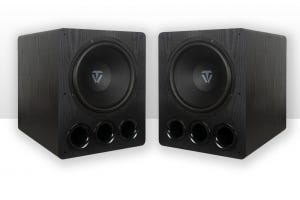
Tonearms obviously play an important role in the function of a turntable. Without them, a record player couldn't play any sound at all. However, most people don't know that the design of a tonearm also has an impact on the audio quality and performance of the turntable. So, if you want the best possible hi-fi experience from your turntable, pay attention to the tonearm design.
For those who don't know, a turntable is made up of four main parts:
- The plinth, or chassis; the outer frame that encloses the inner mechanisms of the turntable.
- The platter; the rotating disc that holds the record, powered by a direct drive or a belt drive.
- The slip mat; the thin cushion that rests on top of the platter.
- The tonearm; With a counterweight on one side and a headshell on the other, this moving component holds the needle in place as it rests on the record.
The grooves on a record act as a physical representation of the audio waves recorded. When the needle tracks these grooves, it creates an electrical signal that is transferred back into sound waves by the cartridge, and amplified before it reaches your speakers. The better the needle is able to follow a record's grooves, the more details of the audio will be picked up, and the cleaner the audio signal will be.
A huge part of making sure your needle is performing well is keeping it clean. Additionally, the performance of the tonearm and its ability to keep the needle steady while the record spins also plays a role. The tonearm has to be both steady and flexible enough to keep the needle centered in the groove as it moves inward on the record and over all those minute bumps and valleys. Features like rigidity, mass, damping, and bearing all impact a tonearm's performance.
There are three main types of tonearms:
Straight
A straight tonearm is just that -- there are no curves or bends from the front to the back of the tonearm. There are limitations to this simple design, and the length of a straight tonearm makes a big difference. Long tonearms typically require an additional anti-skate mechanism to counteract the inward pull of the record spiral. This makes the tonearm heavier and adds complexity to the mechanism. A shorter tonearm will have less mass, making it easier to respond to the needle's subtle bumps and wiggles. The drawback of a lightweight tonearm is a greater risk of jumping out of the groove, so the right mass simply depends on the tonearm and the cartridge. A shorter length also has geometry on its side, requiring no anti-skate mechanism.
J Type
A J type tonearm is almost identical to a straight one, but features a slight bend at the headshell, forming a recognizable "J" shape. This design allows for a longer tonearm to fit into a smaller space, which generally reduces tracking errors and adds extra weight to the tonearm.
S Type
The S type features an angled tonearm that maintains horizontal balance. This offers greater resistance against disc imperfections or warped records, vibrations from the chassis, and tracking errors. An S type tonearm could be considered a more versatile arm shape for most turntables.
It's important to do substantial research if you're choosing a tonearm for your turntable; one of the best ways to get a feel for the differences is going to a physical store to test them out for yourself. Consider the type of cartridge you use and the condition of your records or your turntable maintenance practices to determine what you might want in a tonearm.





